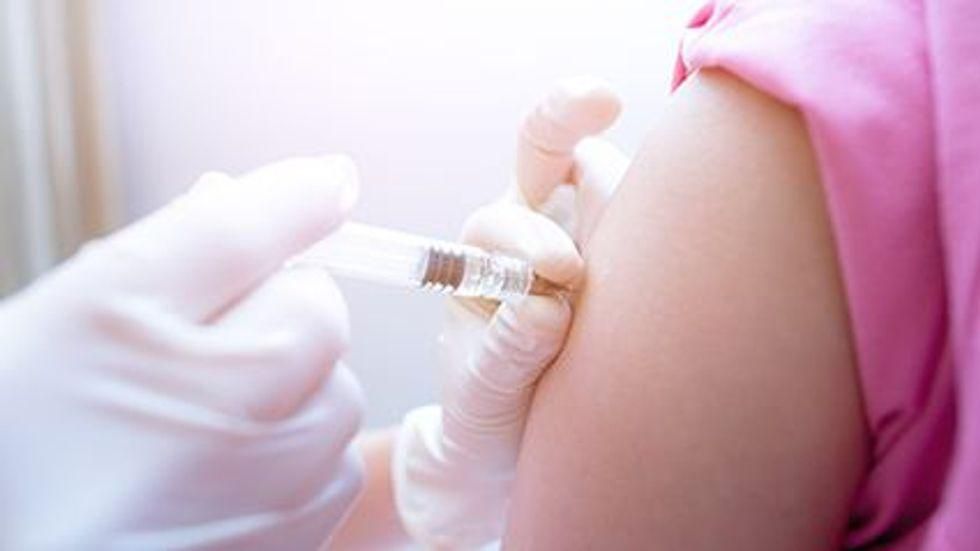WEDNESDAY, May 19, 2021 (HealthDay News) — In a finding that offers the first evidence that the human papillomavirus (HPV) vaccine is indeed protecting women from cervical cancer, new research shows cases in the United States have slowly but steadily declined over the last decade and a half.
However, other HPV-related cancers like anal, rectal and oral tumors continue to increase, suggesting that regular cancer screening also plays a powerful role in saving lives, the researchers added.
The incidence of cervical cancer has decreased 1% annually over the past 17 years, according to findings presented Wednesday at the American Society of Clinical Oncology (ASCO) virtual annual meeting.
This decrease has been even more dramatic in U.S. women between the ages of 20 and 24, with a 4.6% annual decline in cervical cancer cases — suggesting that the HPV vaccine, which was approved for girls in 2006, is helping drive down rates of that cancer.
“Women aged 20 to 24 in 2017 were aged 9 to 13 in 2006,” explained lead researcher Dr. Cheng-I Liao, of Kaohsiung Veterans General Hospital in Taiwan. “It means the HPV vaccination may have had an effect.”
Previous studies have shown declines of cervical cancer in countries like Sweden and Australia, but this is the first to show direct benefits of HPV vaccination when it comes to cervical cancer in the United States, said ASCO President Dr. Lori Pierce.
“This study is unique in looking specifically at a U.S. population,” Pierce said.
HPV causes more than 90% of cervical and anal cancers, as well as 60% to 75% of oral, vaginal and penile cancers, researchers said in background notes.
About 60% of HPV cancers occur in women and 40% in men, the researchers said.
Analyzing U.S. cancer statistics from 2001 through 2017, researchers found a gradual decline in cervical cancer cases in the years since the HPV vaccine became available.
However, the rate of HPV-related cancers without standardized screening guidelines dramatically increased during the same period.
For example, the rates of anal and rectal cancers suggest that those malignancies will become more common among women over 50 than cervical cancer by the year 2025, Liao said.
In men, oral cancer accounted for 4 of 5 HPV-related cancers, a rate that is nearly five times higher than in women. The HPV vaccine became available for boys in 2011, and today it’s approved for everyone up to age 45.
Over the last 17 years, there was an overall annual increase in HPV-related cancers in men of 2.4% per year, with the highest increase in oral cancer, researchers found.
These numbers suggest that HPV vaccination alone might not cut cancer rates, Liao concluded. The jab must be accompanied by screening methods that can catch these cancers early enough for successful treatment.
“Without standardized screening, HPV-related cancers, such as oropharyngeal cancers and anal rectal cancers, are increasing,” Liao said in a statement. “In order to reduce these trends and achieve success comparable to what we’re seeing with cervical cancer, we must develop effective screening strategies and determine vaccine efficacy in these patient populations.”
Pierce agreed.
“The study shows that for cervical cancer, where there are clear screening and vaccine guidelines, the incidence has decreased annually over the last 17 years, which is certainly very gratifying to see,” Pierce said. “However, for the other HPV cancers for which we don’t have screening guidelines, we are seeing a marked increase in incidence.
“I think the study is important, highlighting where we are in the U.S. with regard to HPV-related cancers, and to suggest where resources and research is needed as we go forward,” she concluded. “There is much work to do.”
Findings presented at medical meetings are considered preliminary until published in a peer-reviewed journal.
More information
The U.S. National Cancer Institute has more about HPV and cancer.
SOURCES: Cheng-I Liao, MD, Kaohsiung Veterans General Hospital, Kaohsiung, Taiwan; Lori Pierce, MD, president, American Society of Clinical Oncology (ASCO); ASCO virtual annual meeting, presentation, May 19, 2021
Copyright © 2025 HealthDay. All rights reserved.

